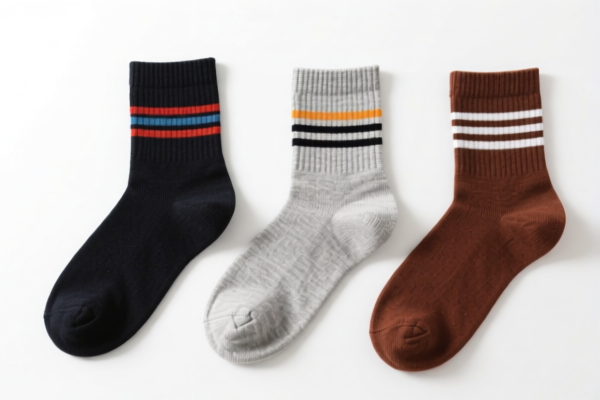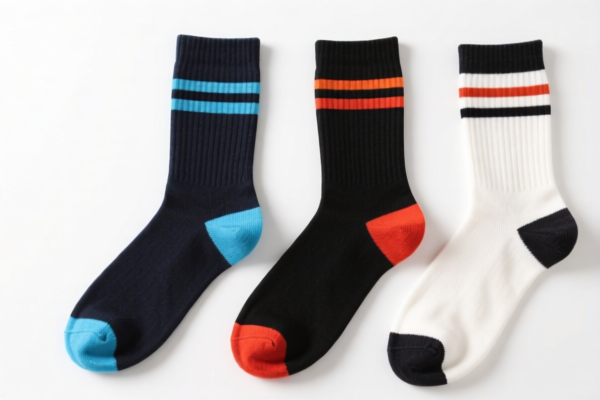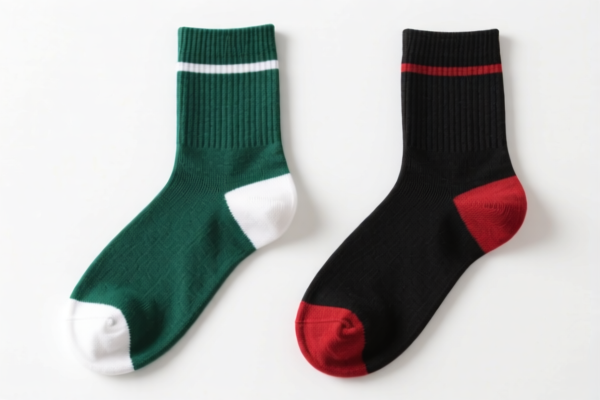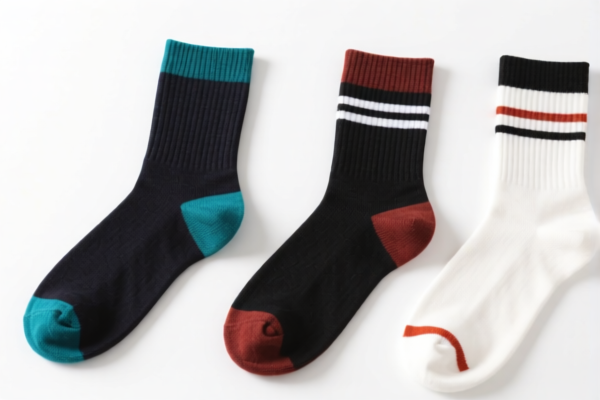| HS Code | Official Doc | Tariff Rate | Origin | Destination | Effective Date |
|---|---|---|---|---|---|
| 6115940000 | Doc | 48.8% | CN | US | 2025-05-12 |
| 6115956000 | Doc | 47.5% | CN | US | 2025-05-12 |
| 6405209015 | Doc | 42.5% | CN | US | 2025-05-12 |
| 6405902000 | Doc | 41.3% | CN | US | 2025-05-12 |
| 6404195715 | Doc | 42.5% | CN | US | 2025-05-12 |
| 6404195915 | Doc | 78.0% | CN | US | 2025-05-12 |




Floor Socks
Floor socks are a type of indoor footwear designed to provide warmth, comfort, and traction on indoor surfaces, typically floors. They differ from standard socks in their construction, incorporating features for enhanced grip and durability suitable for walking around the house.
Material
Floor socks are commonly made from a blend of materials, prioritizing softness, warmth, and resilience. Common materials include:
- Fleece: Provides excellent warmth and softness. Often used as the primary inner lining.
- Sherpa: A thicker, more plush version of fleece, offering superior insulation and comfort.
- Microfiber: A synthetic material known for its softness, durability, and moisture-wicking properties.
- Cotton: Used in blends for breathability and comfort, though less common as a sole material due to lower grip.
- Spandex/Elastane: Added for stretch and a snug fit.
- Silicone Grips: Applied to the soles to prevent slipping on smooth surfaces.
Purpose
The primary purposes of floor socks are:
- Warmth: Providing insulation for feet in cooler indoor environments.
- Comfort: Offering a soft and cozy feel for relaxed indoor wear.
- Slip Resistance: Preventing falls and injuries on hard floors, particularly for those with mobility concerns.
- Cleanliness: Protecting feet from dirt and germs, and keeping floors cleaner.
Function
Floor socks function by:
- Insulation: Trapping air within the fabric to retain heat.
- Moisture Wicking: Absorbing sweat and keeping feet dry.
- Grip Enhancement: The silicone grips create friction with the floor surface, reducing the risk of slipping.
- Cushioning: Providing a layer of padding for added comfort.
Usage Scenarios
Floor socks are commonly used in:
- Homes: For everyday wear around the house, especially during colder months.
- Hospitals & Healthcare Facilities: Providing warmth and slip resistance for patients and staff.
- Yoga & Pilates Studios: Offering grip and stability during floor exercises.
- Dormitories: Providing warmth and comfort in shared living spaces.
- Elderly Care Facilities: Enhancing safety and preventing falls for residents.
Common Types
- Knit Floor Socks: Made from knitted fabrics, offering a cozy and flexible fit. Often feature various patterns and designs.
- Fleece Floor Socks: Constructed with fleece lining for maximum warmth and softness.
- Sherpa Floor Socks: Similar to fleece socks, but with a thicker, more plush sherpa lining.
- Non-Slip Slipper Socks: Feature a full or partial silicone grip on the sole for enhanced traction.
- Crew Floor Socks: Extend higher up the ankle for added warmth and coverage.
- Toe Socks: Separate toes for improved comfort and circulation.
- Cable Knit Floor Socks: Feature a textured cable knit pattern for a classic look.
Floor socks are footwear typically worn indoors for warmth and comfort, often featuring non-slip soles. They can be knitted or crocheted and made from various materials like wool, cotton, or synthetic fibers.
The following HS codes may be relevant based on the provided information:
-
6115940000: This code covers panty hose, tights, stockings, socks and other hosiery, including graduated compression hosiery, and footwear without applied soles, knitted or crocheted, specifically those made of wool or fine animal hair. Chapter 61 relates to knitted or crocheted fabrics and articles thereof. Heading 6115 specifically covers hosiery and other knitted or crocheted garments. Subheading 6115.94 further narrows this down to "other" hosiery made of wool or fine animal hair. The basic duty is 11.3%, with an additional duty of 7.5%, and a further 30% after April 2, 2025, resulting in a total tariff of 48.8%.
-
6115956000: This code also covers panty hose, tights, stockings, socks and other hosiery, knitted or crocheted, but specifically those made of cotton and containing lace or net. Chapter 61 and Heading 6115 are the same as above. Subheading 6115.95 specifies cotton hosiery, and 6115.95.60 further defines those containing lace or net. The basic duty is 10.0%, with an additional duty of 7.5%, and a further 30% after April 2, 2025, resulting in a total tariff of 47.5%.
-
6405209015: This code covers other footwear with uppers of textile materials, specifically other house slippers. Chapter 64 relates to footwear. Heading 6405 covers footwear with uppers of textile materials. Subheading 6405.20 specifies footwear with textile uppers, and 6405.20.90 further defines other house slippers. The basic duty is 12.5%, with no additional duty, and a further 30% after April 2, 2025, resulting in a total tariff of 42.5%.
-
6404195715: This code covers footwear with outer soles of rubber, plastics, leather or composition leather and uppers of textile materials, specifically footwear with outer soles of rubber or plastics valued not over $3/pair, with uppers of textile material other than vegetable fibers and having outer soles with textile materials having the greatest surface area in contact with the ground. Chapter 64 and Heading 6404 are the same as above. Subheading 6404.19 specifies footwear with rubber or plastic soles and textile uppers, and 6404.19.57 further defines those valued not over $3/pair with specific upper and sole material requirements. The basic duty is 12.5%, with no additional duty, and a further 30% after April 2, 2025, resulting in a total tariff of 42.5%.
-
6404195915: This code covers footwear with outer soles of rubber, plastics, leather or composition leather and uppers of textile materials, specifically footwear with outer soles of rubber or plastics valued not over $3/pair, and other. Chapter 64 and Heading 6404 are the same as above. Subheading 6404.19 specifies footwear with rubber or plastic soles and textile uppers, and 6404.19.59 further defines other footwear valued not over $3/pair. The basic duty is 48.0%, with no additional duty, and a further 30% after April 2, 2025, resulting in a total tariff of 78.0%.
Customer Reviews
No reviews yet.